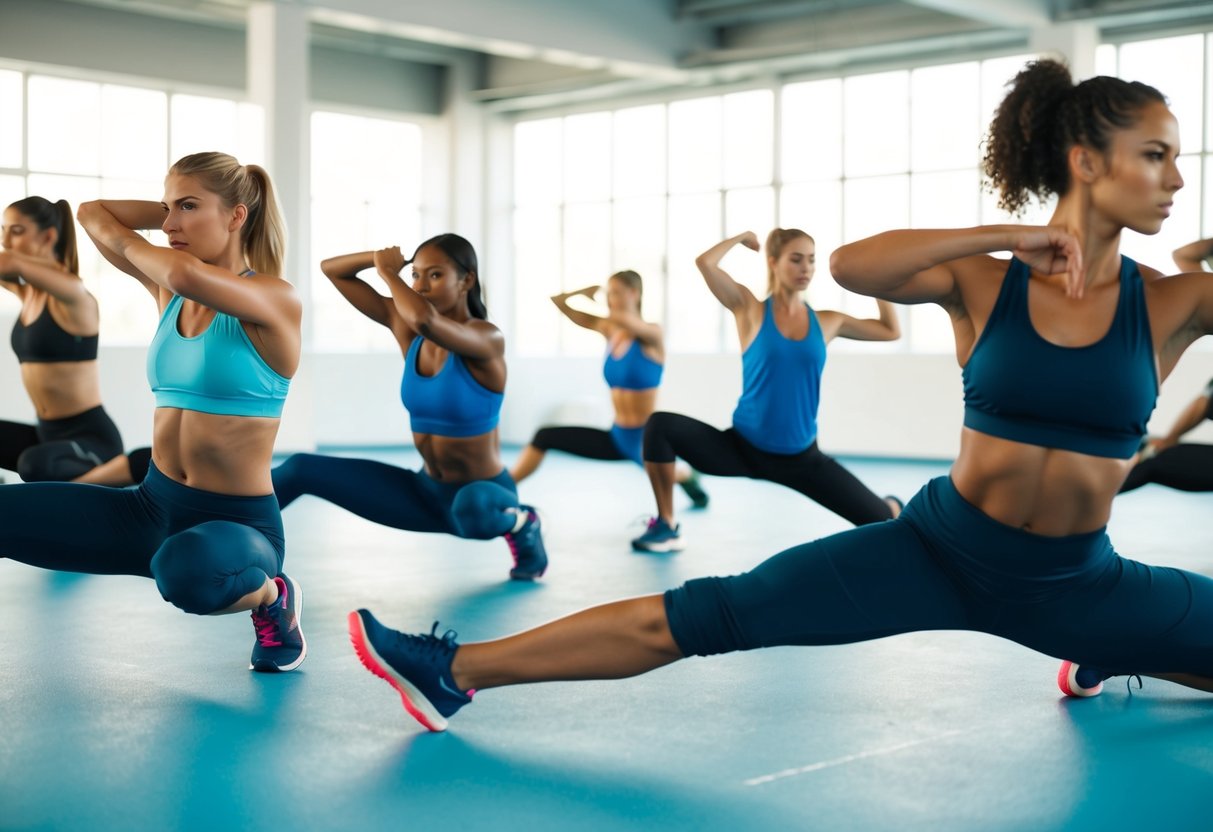
Advanced Dynamic Routines
Advanced routines aim to increase intensity and complexity. Bodyweight squats can be intensified with added jump sequences, promoting explosive strength.
Incorporating multi-directional forward lunges improves balance and agility. Speed can be increased as proficiency grows without losing form precision. For an enhanced workout, the pushup position can evolve into dynamic moves, such as alternating shoulder taps or plank jacks, engaging more muscle groups.
Executing each exercise for around 45 seconds with minimal rest challenges endurance further, pushing experienced individuals towards peak performance levels.
Integration With Overall Workout Plan
Integrating a dynamic warm-up into an overall workout plan is essential for enhancing performance and reducing injury risk. It prepares the body for physical activity by increasing blood flow and muscle temperature. This process helps in promoting better mobility and flexibility, ensuring that the muscles are ready for the exertions ahead.
Starting a workout with a dynamic warm-up can address specific muscle imbalances by activating underused muscles and loosening overly tight areas. For individuals with previous injuries or chronic tightness, incorporating movements targeting those areas can be particularly beneficial. This process aids in establishing a more balanced posture and movement pattern.
A well-structured dynamic warm-up should align with the goals of the workout session. For example, on a leg day, exercises like leg swings and lunges can be used to prepare the lower body. On upper body days, incorporating arm circles and torso rotations may yield better results in preparing those muscle groups.
It is important to keep the warm-up varied to maintain engagement and effectiveness. Including a range of movements can prevent monotony and ensure comprehensive muscle activation. In this way, the warm-up acts not only as preparation but also as a valuable component in the overall training routine.
Common Mistakes to Avoid During Warm-Ups
Dynamic warm-ups prepare the body for exercise, but certain mistakes can undermine their effectiveness. By missing key muscle groups or overemphasizing stretching, athletes may be less prepared for vigorous activities.
Overstretching and Under-Preparation
Stretching is essential, yet overstretching can lead to reduced muscle function. Muscles need to be activated, not overly relaxed, before an intense workout. Overemphasizing static stretches limits the efficacy of a warm-up by hindering the muscle’s readiness and responsiveness.
Dynamic exercises like leg swings and arm circles better prepare the muscles without overextending them. It’s crucial to strike a balance, integrating controlled dynamic movements instead of focusing exclusively on prolonged holds. Ensuring the muscles are warm rather than overstretched helps in preventing injuries.
Ignoring Muscle Groups
Neglecting certain muscle groups weakens the benefits of dynamic warm-ups. Athletes who focus solely on one area may inadvertently cause muscle imbalances. Comprehensive warm-ups should engage a variety of muscle groups to maximize readiness and performance.
In a dynamic routine, a mix of exercises to cover both upper and lower body muscle groups is suggested. Incorporating movements targeting often-overlooked areas like hip flexors, glutes, and shoulders ensures balanced muscle activation. This approach not only improves performance but also helps in maintaining muscle harmony and preventing strain.



